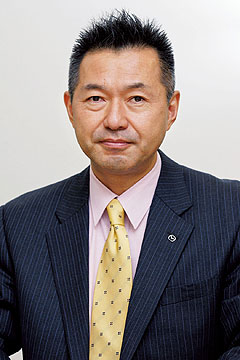CX-5 benefits from local input
BY BYRON MATHIOUDAKIS | 27th Feb 2012

According to program manager Hideaki Tanaka, a Mazda Australia contingency joined others from around the globe at a product roundtable in 2009 to outline their basic requirements for the upcoming compact SUV.
Though not devised as a direct replacement for the CX-7 – which continues alongside the CX-5 in other markets, but not Australia – it is understood that Mazda Australia was desperate for the CX-5 not to feature the same drawbacks as the larger SUV.
Mazda Australia marketing manager Alastair Doak told GoAuto that the newcomer’s proportions and packaging elements were partly dictated by the Australians, who were keen to “bring the CX-5 into the sweet spot” of the compact SUV class in this country.
Even after the introduction of a cheaper front-wheel-drive model in late 2009, Mazda Australia struggled to keep the CX-7 cost-competitive against the likes of the Subaru Forester, Nissan X-Trail, Honda CR-V and Toyota RAV4, partly due to its larger size.

The fact that it was launched (in late 2006) in the midst of spiralling fuel prices with a thirsty high-performance turbocharged petrol engine and all-wheel drive meant that the original CX-7 was positioned and priced “in a no-man’s land” between the most expensive Japanese compact SUVs and pricey European crossovers such as the BMW X3.
As a result, CX-7 sales only really took off after the entry-level model was released, increasing the monthly average tally from just over 400 to 775 units in its final 18 months.
Mazda Australia also pushed through driving and ownership-related modifications on the CX-5 with the local consumer in mind.
These include a specially tuned electric power-assisted steering system that is based on the European set-up as opposed to the North American-bound model.
Mr Tanaka’s engineering team also implemented a unique calibration of the new SkyActiv-Drive six-speed automatic transmission for Australia, this time derived from the US model.
According to the long-serving Mazda engineer, it was determined that Australian drivers require a gearbox that responds instantly to pedal inputs because of our propensity to be “on and off the gas all the time”. Europeans, by comparison, tend to operate their automatics more smoothly and harmoniously, he said.
Mazda Australia also required the fitment of a larger space-saver spare wheel – a 185/80 R17 unit – compared to what is offered in some overseas markets. But the need to maintain a flat load space with the rear seat folded meant that having a wider spare beneath the cargo floor is not possible.
Although the basic SkyActiv-based architectural parameters were two years old and already in place by 2009, Mr Tanaka said that the CX-5 has had the fastest development time of any Mazda model.
Among the competitors benchmarked during the CX-5’s gestation was the BMW X1 all-wheel-drive diesel for dynamics and the Volkswagen Tiguan for comfort and refinement.
Mr Tanaka joined Mazda in the product planning department in 1984. He was involved in concept development of the original MX-5 during the 1980s and has been behind key models such as the first Mazda6 (2002), RX-8 (2003) and CX-9 (2007).